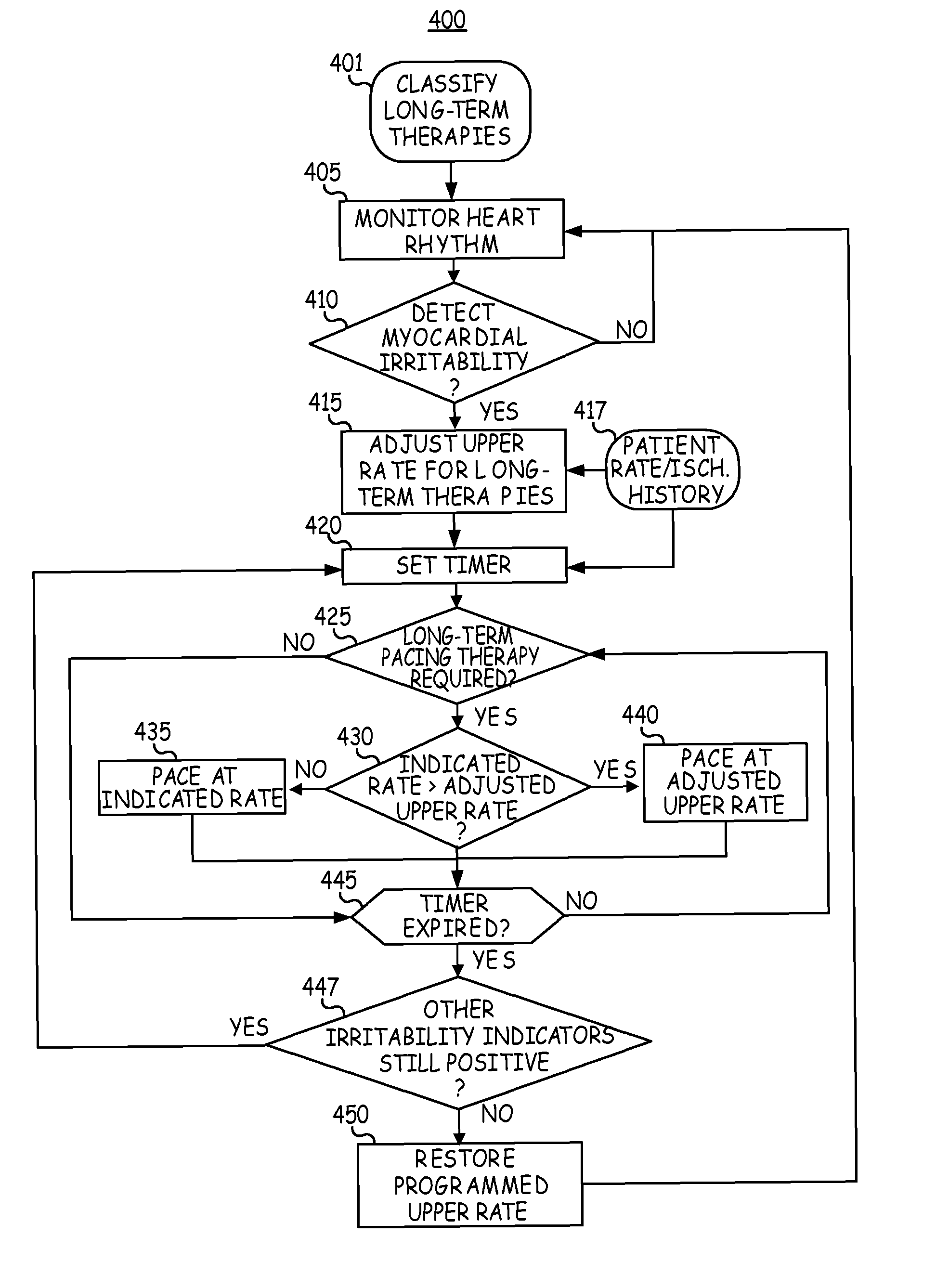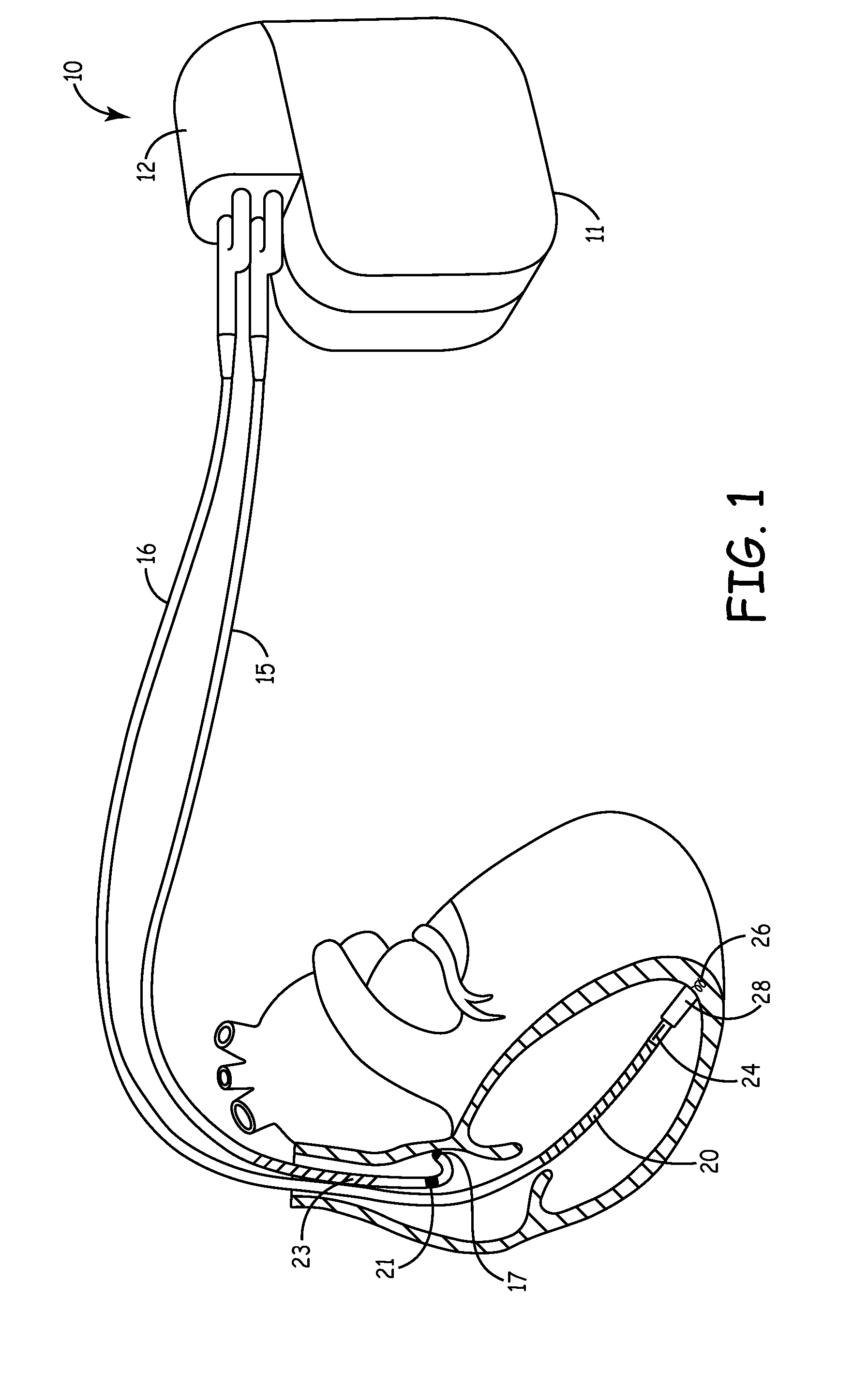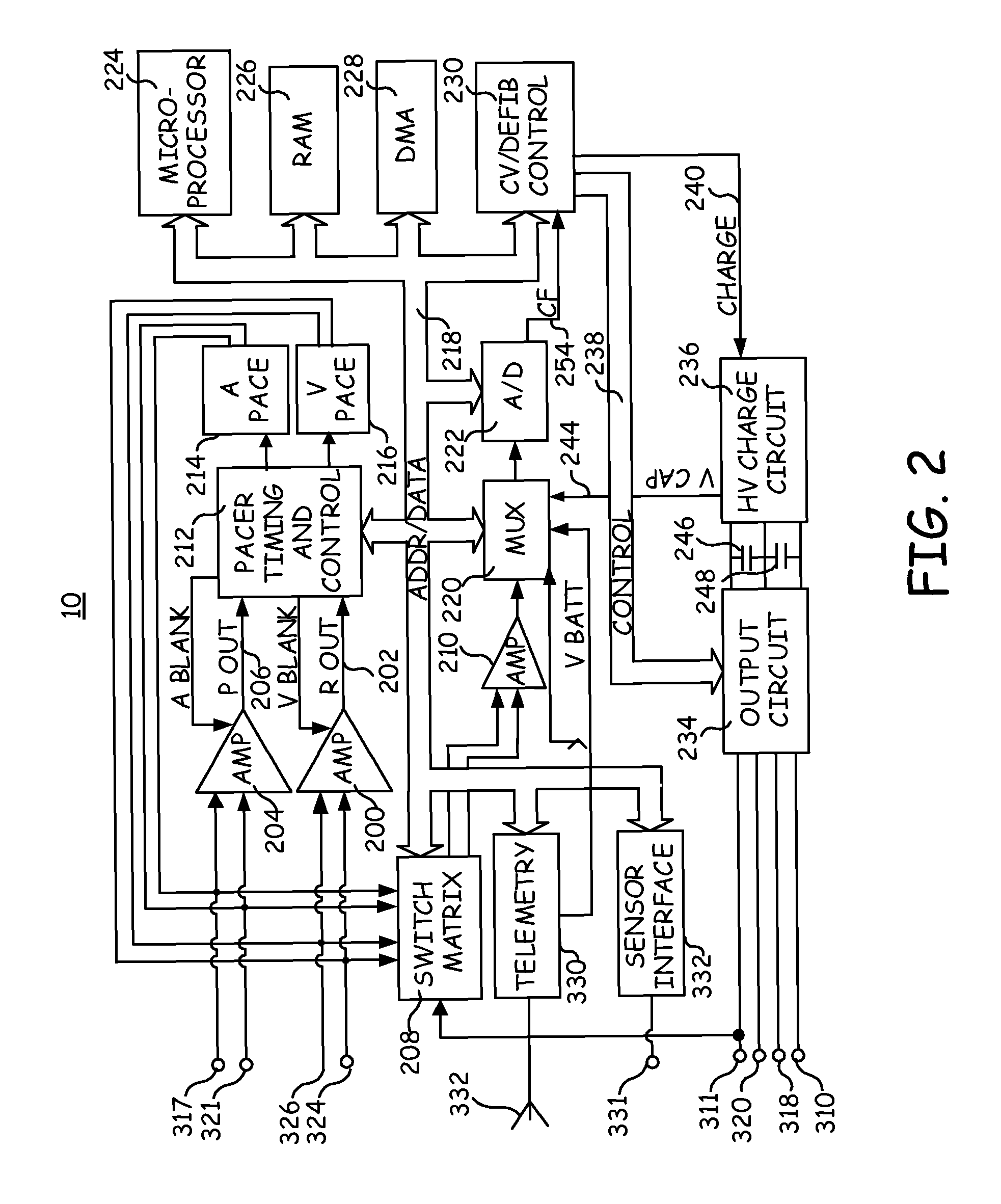Suppression of high rate pacing for reducing myocardial ischemic irritability
a technology of ischemic irritability and high rate pacing, which is applied in the field of control of cardiac therapy delivery, can solve the problems of relative high rate pacing episodes, putting patients at risk for myocardial injury or serious arrhythmia, etc., and achieves the effects of increasing myocardial irritability, increasing myocardial irritability, and increasing myocardial irritability
- Summary
- Abstract
- Description
- Claims
- Application Information
AI Technical Summary
Benefits of technology
Problems solved by technology
Method used
Image
Examples
Embodiment Construction
[0012]Rate-responsive pacing and other pacing therapies aimed at maintaining a heart rate that is stable and meets the metabolic demands of the patient do not necessarily take into account the metabolic demand placed on the myocardium. A sensor-indicated rate for rate-responsive pacing or a pacing rate required to overcome an intrinsic rate during atrial preferred pacing, overdrive pacing or other self-adjusting pacing modes could pace the heart at a rate that produces demand-induced myocardial ischemia. To protect against ischemic injury or ischemia-induced arrhythmias, the maximum pacing rate that self-adjusting pacing modes are allowed to reach should be controlled in a way that reduces the likelihood of inducing or worsening an ischemic condition.
[0013]The invention is directed toward a method for controlling the maximum allowable pacing rate during self-adjusting pacing modes based on an indicator of cardiac insult, such as myocardial irritability, for example. “Myocardial irri...
PUM
 Login to View More
Login to View More Abstract
Description
Claims
Application Information
 Login to View More
Login to View More - R&D
- Intellectual Property
- Life Sciences
- Materials
- Tech Scout
- Unparalleled Data Quality
- Higher Quality Content
- 60% Fewer Hallucinations
Browse by: Latest US Patents, China's latest patents, Technical Efficacy Thesaurus, Application Domain, Technology Topic, Popular Technical Reports.
© 2025 PatSnap. All rights reserved.Legal|Privacy policy|Modern Slavery Act Transparency Statement|Sitemap|About US| Contact US: help@patsnap.com



